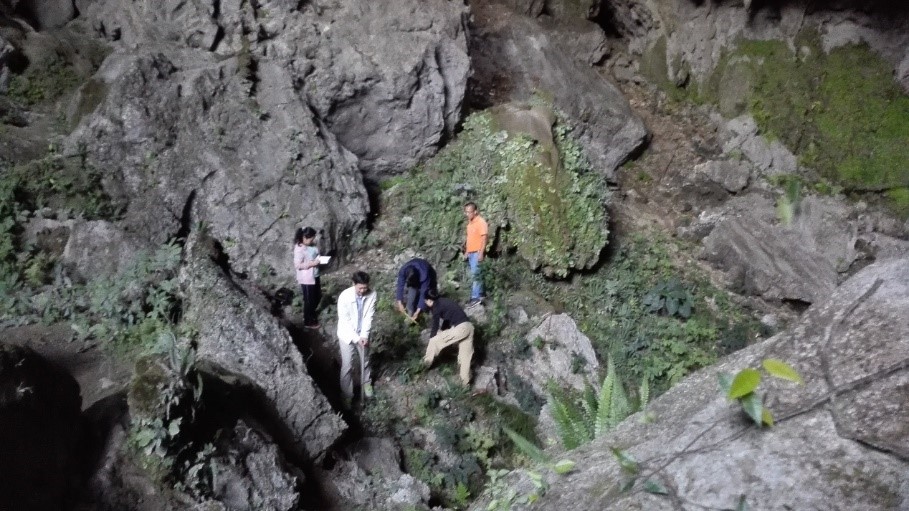

Karst landscapes are widely distributed and account for nearly 15% of the world’s land surface. The karst regions of China cover 1.9 million km2 and are among the largest karst regions in the world. The average density of karst caves is 6.4/km2 in China. Plant diversity, habitat properties, and their relationships in karst caves remain poorly understood.
Prof. REN Hai and his colleagues from South China Botanical Garden of Chinese Academy of Sciences surveyed vascular plant and bryophyte diversities and measured the habitat characteristics in six karst caves in south China with different disturbance histories (one had been disturbed by poultry feeding, three had been disturbed by tourism, and two were undisturbed). They found a total of 43 angiosperm species from 27 families, 20 lycophyte and fern species from 9 families, and 20 species of bryophytes from 13 families in the six caves. Habitat characteristics including light intensity, air relative humidity, air temperature, and soil properties varied among the caves.
The plant diversity in karst caves was not rich, but the species composition was unique. The caves with high disturbance had the lowest species richness, numbers of individuals, and Shannon-Wiener diversity indices but the highest Simpson’s dominance indices. The caves with less disturbance had the highest numbers of species, numbers of individuals, and Shannon-Wiener diversity indices but the lowest Simpson’s dominance indices. The disturbed caves were often dominated by drought-tolerant, tenacious mosses (bryophytes), while the relatively un-disturbed caves contained abundant liverworts (bryophytes), which were better adapted to humid environments. Plant diversity in karst caves was closely related to habitat heterogeneity, light and water status, and nutrient availability. Tourism and poultry farming were associated with the degradation of vegetation in some karst caves. Protecting and restoring bryophytes might facilitate the settlement, growth, and succession of vascular plants in karst caves. Bryophytes can be used as indicators of overall plant diversity and restoration status in karst caves.
The result has been published in Ecological Indicators, entitled “Bryophyte diversity is related to vascular plant diversity and microhabitat under disturbance in karst caves”. For further reading please refer to: https://doi.org/10.1016/j.ecolind.2020.106947.

Figure. The vegetation investigation at Karst cave in South China

